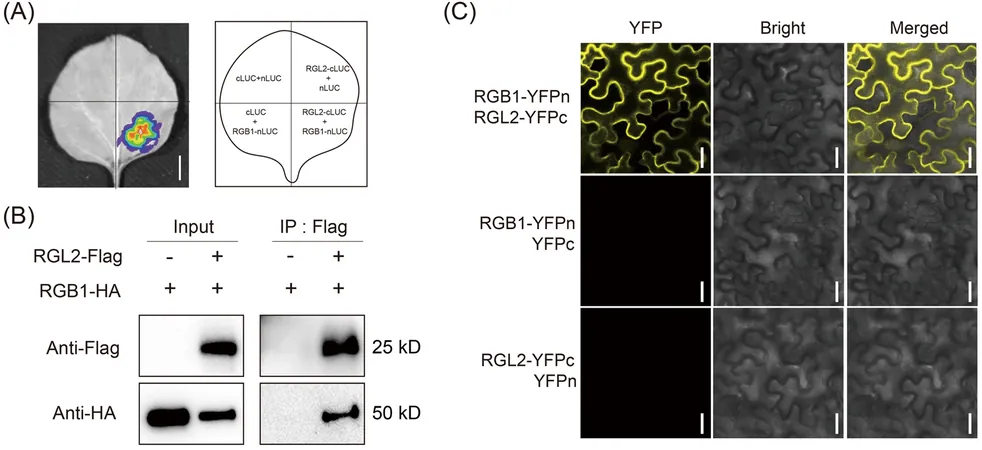
Unveiling the Secret to Bigger Rice Grains: Groundbreaking Gene Discovered!
2024-10-10
Author: Emma
Groundbreaking Discovery in Rice Genetics
In an exciting breakthrough for the agricultural world, a research team led by Professor Wu Yuejin from the Hefei Institutes of Physical Science at the Chinese Academy of Sciences has uncovered a pivotal gene that has the potential to revolutionize rice cultivation: the RGL2 gene. This discovery, recently published in the esteemed journal Physiologia Plantarum, could lead to enhanced high-yield breeding techniques for rice.
Importance of Rice Cultivation
Rice is a staple food for over half of the world's population, making its yield a critical focus for breeders. Grain dimensions, particularly length and width, greatly influence overall yield.
Key Findings from the Research
During their investigation, Wu's team identified a specific rgl2 mutant where the grains were notably shorter, while retaining their width—an intriguing finding achieved through the method of physical mutagenesis. Further investigation into the cellular mechanisms revealed that the reduction in grain length was primarily due to a lower number of cells, rather than an alteration in cell size.
The Role of RGL2 Gene
Their mapping and functional studies pinpointed that RGL2 encodes a keratin-associated protein (KAP) that is significantly active in the young panicle, the flowering part of the plant crucial for grain formation. Notably, when RGL2 was overexpressed, it led to an increase in both grain length and single-plant yield by boosting cell proliferation within the grain.
Interactions Affecting Yield
Moreover, the research unveiled a fascinating interaction: the OsRGL2 protein was found to engage with RGB1 protein, hinting that it might positively influence grain characteristics and yield through the sophisticated G protein signaling pathway. This interaction lays the groundwork for new insights into how genetic engineering can be employed in crop improvement.
Implications for Agriculture
The implications of this discovery are profound. RGL2's role in regulating the cell cycle indicates that it is a key player in managing how rice plants grow, by controlling the expression of genes that influence cell division and overall cell number. In layman's terms, the RGL2 gene helps rice grains to elongate by ensuring more cells successfully develop.
Conclusion: A Path Forward for Food Security
This pivotal finding not only enhances our scientific understanding of the genetic underpinnings of rice grain development but also paves the way for innovative molecular breeding strategies aimed at optimizing rice yield. As the global demand for food continues to escalate, advancements such as these could be the game-changer that ensures food security for generations to come. Don’t miss out on how this discovery could reshape the future of agriculture!









 Brasil (PT)
Brasil (PT)
 Canada (EN)
Canada (EN)
 Chile (ES)
Chile (ES)
 España (ES)
España (ES)
 France (FR)
France (FR)
 Hong Kong (EN)
Hong Kong (EN)
 Italia (IT)
Italia (IT)
 日本 (JA)
日本 (JA)
 Magyarország (HU)
Magyarország (HU)
 Norge (NO)
Norge (NO)
 Polska (PL)
Polska (PL)
 Schweiz (DE)
Schweiz (DE)
 Singapore (EN)
Singapore (EN)
 Sverige (SV)
Sverige (SV)
 Suomi (FI)
Suomi (FI)
 Türkiye (TR)
Türkiye (TR)